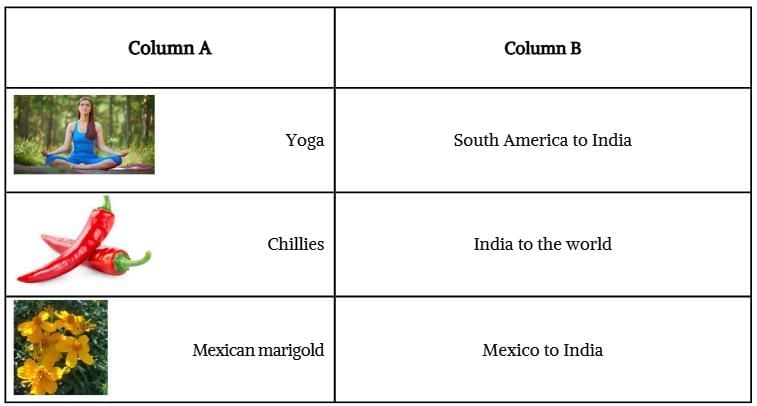Unit Test: Earth — Our Shared Home | Our Wondrous World Class 5 - New NCERT PDF Download
Time: 45 Minutes
M.M.: 20
Attempt all questions.
Question numbers 1 to 6 carry 1 mark each.
Question numbers 7 to 9 carry 3 marks each.
Question number 10 carries 5 marks.
Q1. Which statement best explains “nature has no boundaries”?
(a) Countries never trade
(b) Air, water, animals, and seeds move across borders
(c) People never travel
(d) Oceans are not connected
Q2. Fill in the blanks:
Rosy starlings migrate in winter from/to India.
Q3. True or False:
Chillies are originally from South America and were brought to India by travellers.
Q4. The thought “the world is one family” is expressed in which Sanskrit phrase?
Q5. Match the following:
Q6. Which statement about sugar is correct?
(a) Sugar-making started in Europe
(b) Jaggery and sugar techniques spread from India
(c) Sugarcane grows only in deserts
(d) Sugar replaced water
Q7. Give three examples from the chapter that show how cultures are connected through travel and trade.
Q8. How do migrating birds like rosy starlings help farmers and ecosystems? Give three points.
Q9. What does “Vasudhaiva Kutumbakam” teach us? List three attitudes or actions it inspires.
Q10. Your class is curating a “Web of Life” wall. Plan a 5-part display showing connections across countries:
(a) One animal migration,
(b) One food that travelled to India,
(c) One idea/skill India shared,
(d) One plant that moved to India,
(e) A short message on caring for Earth together.
Find Solutions of the Unit Test- Here
|
11 videos|212 docs|10 tests
|
FAQs on Unit Test: Earth — Our Shared Home - Our Wondrous World Class 5 - New NCERT
| 1. What is the importance of Earth as our shared home? |  |
| 2. How can we protect our planet for future generations? |  |
| 3. What are the major environmental challenges facing Earth today? |  |
| 4. Why is biodiversity important for the health of our planet? |  |
| 5. What role do humans play in the health of the Earth? |  |




















